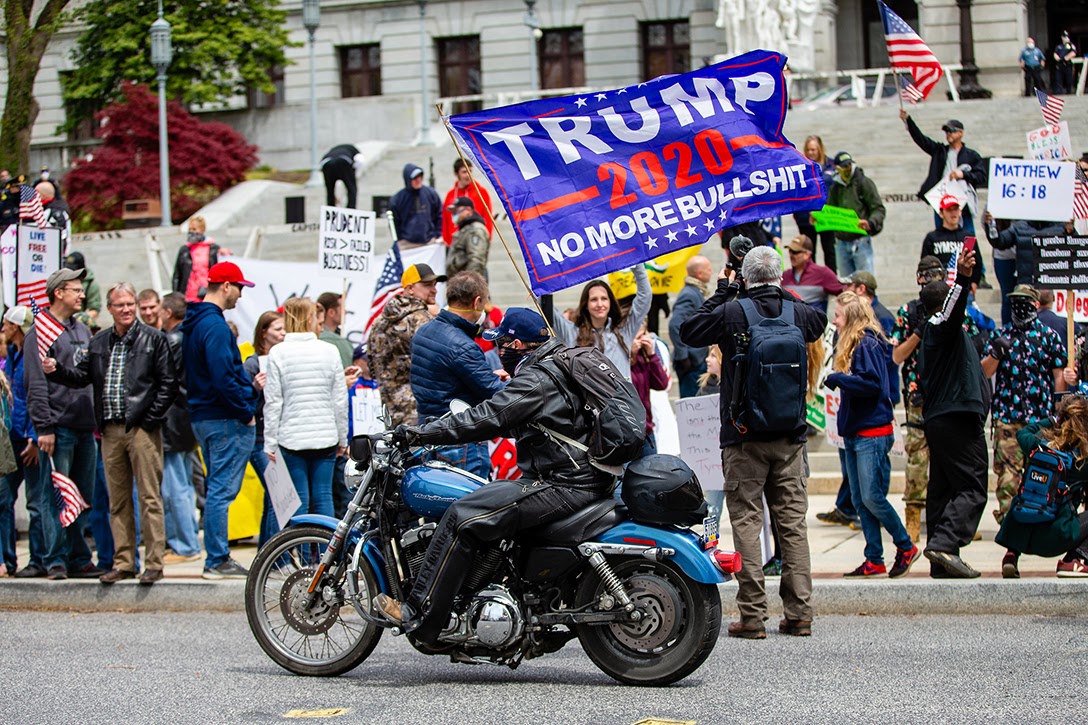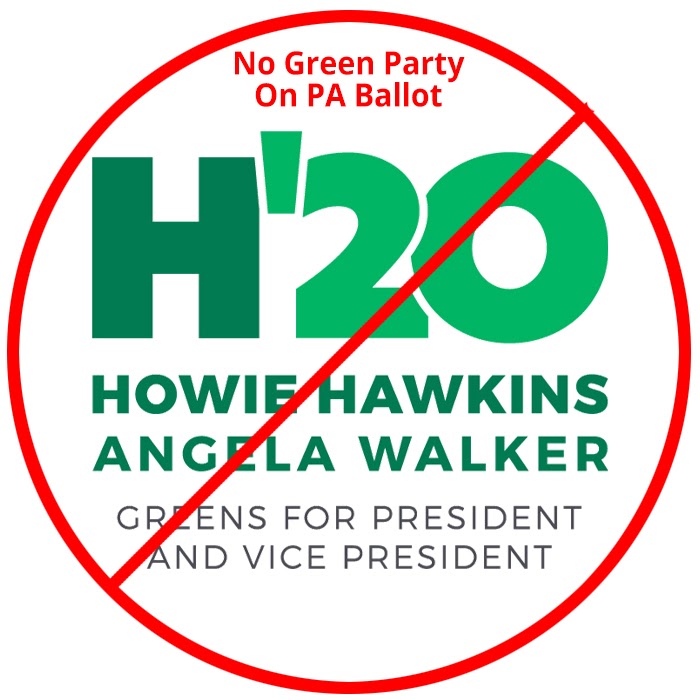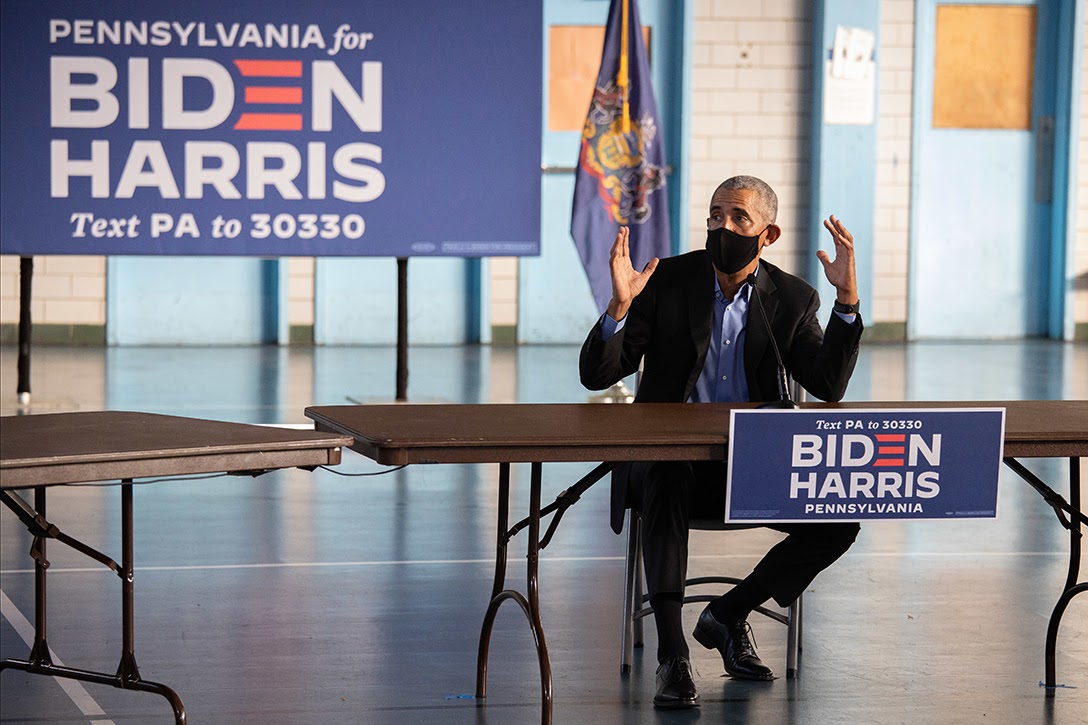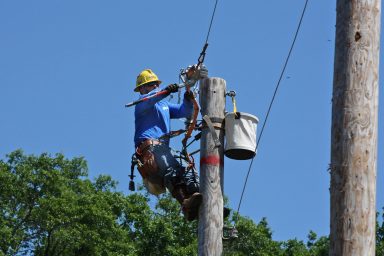Many of the Pennsylvanians who voted for Trump in 2016 have died or moved away.
|
Listen To This Story
|

No need to read the polls to discover how important Pennsylvania is to President Trump’s re-election. His schedule says it all.
In the last two weeks, the president has hit every one of the state’s media markets, and his patented mass — often maskless — rallies have drawn tens of thousands of supporters.
His stops include Pittsburgh, Johnstown, Altoona, Erie, Allentown, and the small town of Lititz in central Pennsylvania. On Saturday, October 31, he traveled to Reading and Bucks County in the southeastern part of the state and Butler County in the west. On Election Day, he will go to Scranton — Joe Biden’s hometown — for one last hurrah.
The logistics of these presidential forays are complex, but the goal is simple.
The president is working hard to match or exceed his 2016 victory margin over Hillary Clinton, a win that delivered the state’s 20 electoral votes — and the White House — to candidate Trump.
That margin was as thin as an eyelash — about 44,000 votes out of 6.1 million cast, equal to 7/10ths of 1 percent.
The central question now is: Can he muster his fervent, never-say-die supporters and turn out the vote the way he did four years ago?
At this point, Trump is not trying to reach out to undecideds, independents, or disaffected Democrats. He is focused solely on his base, the same voters who helped him win 56 of the state’s 67 counties in 2016. He beat Clinton with 70 percent of the vote or more in two dozen of them.
Clinton won only 11 counties, but they happened to be the state’s largest. She emerged from the Philadelphia area with a margin of 663,000 votes over her rival, a total that was 48,000 votes more than Barack Obama won in the area in 2012.

Trump supporters gathered at the Pennsylvania Capitol in Harrisburg, PA, to demand that Gov. Tom Wolf reopen the state’s economy on April 20, 2020. Photo credit: Paul Weaver / Flickr (CC BY-NC-SA 2.0)
The area includes the city of Philadelphia and four suburban counties that ring it. In relentlessly Democratic Philadelphia, Trump only managed to get 15 percent of the vote, typical for a Republican presidential candidate. In fact, he got five or fewer votes in half the city’s 1,770 precincts — and no votes (as in zero) in 11 of them.
This year, Biden is ahead by an average of 6 percentage points in the latest polls taken in the state, but that gives no solace to the Democrat’s supporters. Clinton was ahead by as much in the polls in October of 2016.
The president’s base of support is so fixed there is no expectation that he can break out and win in a runaway. Only 2 percent of voters are undecided, according to the authoritative Franklin & Marshall Pennsylvania poll released on Thursday (October 29).
If Trump wins, it will be by a small margin, perhaps in the same five-figure range as seen in 2016. However, if the president is hoping to replicate his formula for victory, new obstacles stand in his way, most of which are out of his control.
Taken together, these obstacles — call them speed bumps — can block his strategy.
Here are four of them:
Ghost Voters
No, not the ones the president sees everywhere in Philadelphia who he suspects will try to steal the election from him via fraud, a charge he makes frequently, but is unable to substantiate.
These ghosts are in the heart of Trump country. They are the people who have died or left the state since 2016.
The Commonwealth of Pennsylvania has a population that is — to use a cruel but accurate word — stagnant. Except for a wide strip of territory that is growing from Philadelphia’s City Hall to the farms and fields of central Pennsylvania, most of the rest of the state is in the midst of population decline.
The 26 counties in the west lost 53,000 people between 2016 and 2019, about 42,000 of those who left are over 18 and eligible to vote. Taking into account voter participation rates, turnout, and the Trump margin, the net loss of votes because of this ghost factor could be between 17,000 and 19,000 votes.
That is especially true of western Pennsylvania, the 26 counties that lie to the west of the aptly named Centre County, home to Penn State.
With the exception of Allegheny County, which includes the city of Pittsburgh and trends strongly Democratic, most voters in these western counties handed their votes to Trump four years ago. That is especially true of counties in populous southwestern Pennsylvania that were once home to Democratic steelworkers and coal miners. But no more.
This area is the Anger Zone of Pennsylvania, populated by many who feel left behind in the new America. These were the people whom Clinton famously called “the Deplorables.” But Trump embraced them, promised to bring back their coal and manufacturing jobs and to stick his finger in the eye of establishment Washington. He shared their anger.
He’s been back to stoke these voters this year, but through death and migration, the base has shrunk.
The 26 counties in the west lost 53,000 people between 2016 and 2019, and about 42,000 of those who left are over 18 and eligible to vote. Taking into account voter participation rates, turnout, and the Trump margin, the net loss of votes due to this ghost factor could be between 17,000 and 19,000 votes.
Republicans brag that they have increased their number of registered voters in the state in the last four years — and they have. But, in western Pennsylvania, most of those newcomers are former Democrats who defected because of the lure of Trump. They voted for him before; they will vote for him again this year. Trump was the magnet that completed a shift that began long ago — back in the Reagan era — for these counties to switch from blue to red.
Net loss of votes for Trump: -17,000.

Hawkins-Walker 2020 presidential campaign logo. Photo credit: Howie Hawkins 2020 Campaign Committee / Wikimedia
The Safety Valves
What happens when voters are unhappy with both major-party candidates? They sometimes look for other names on the ballot that they can use as a safety valve.
There is evidence this happened in 2016 when certain Democrats, who couldn’t bring themselves to vote for Clinton, defected to Green Party candidate Jill Stein. Stein got 49,941 votes in 2016, more than double her 21,341 total in 2012.
Obviously, Stein got votes from voters who supported the Green Party, but after the election a number of Democrats grumbled that those votes were “stolen” from Clinton.
The lesser known story is that of Libertarian Party candidate Gary Johnson. Johnson got 50,000 votes when he ran in 2012. He got nearly three times as many in 2016: 146,715.
There are only two plausible reasons for this Johnson surge: either a sudden embrace of Libertarianism among voters, or defections, mostly by Republicans who would not vote for Clinton, but could not stand Trump. Enter Johnson as their safety-valve candidate.
Chris Borick, a Muhlenberg College pollster and political science professor, believes there is “a sliver of long-time Republicans that have defected from the President and will vote grudgingly for Biden or cast a vote for a third-party option. It’s not a large group, but given the closeness of the 2016 results, it’s certainly important to be attentive to small things.”
The president’s problem is that this year there is no safety valve for progressive Democrats because there is no Green Party candidate on the ballot. In a September ruling, the state Supreme Court ordered the party off the ballot because of flaws in its ballot application. (It faxed in the amended paperwork when the party switched its presidential candidates. The justices said those papers had to be hand-delivered to the State Elections Bureau.)
In the 2008 election, Barack Obama got 99 percent of the Black vote in those 11 wards, close to 94,639 votes. Republican John McCain got 999 votes. In fact, he got zero votes in 57 precincts.
Meanwhile, the Libertarians remain on the ballot, luring Republicans who want a Trump alternative but can’t bring themselves to vote for Biden. The party’s candidate this year is Jo Jorgensen, who is the only woman on the top of the ballot.
With Green Party progressives going to Biden and disaffected Republicans opting for Jorgensen, the potential net loss of votes for Trump is around 50,000.
Black Voters
Everyone knows the cliché that Black voters tend to support Democratic candidates, but the word “support” understates the case. The Black vote is a Democratic monolith, and nowhere more so than in Philadelphia, where Black voters constitute the majority of the city’s 850,000 Democratic voters.
These examples are based on an analysis of vote patterns in 11 city indicator wards where Black voters have constituted 90 percent or more of registered voters since the 1970s. It constitutes a large and reliable sample of Black voter behavior.
In the 2008 election, Barack Obama got 99 percent of the Black vote in those 11 wards, close to 94,639 votes. Republican John McCain got 999 votes. In fact, he got zero votes in 57 precincts.
In 2012, with Obama still at the head of the ticket, the president again got 99 percent with a total nearly identical to that of 2008: 94,616. Republican Mitt Romney got 1,032 votes. In 77 divisions in those 11 wards, the Republican got zero votes. After the election, conservative commentators, including Fox News’s Sean Hannity, said the fact that Romney got no votes in so many precincts was evidence of voter fraud. There was no fraud. The totals were real. Black voters did not like Mitt Romney.
In 2016, without Obama at the top of the ticket, Hillary Clinton suffered some slippage. She got 97 percent of the Black vote in the indicator wards for a total of 85,046 — about 10,000 fewer than Obama. Trump got 2 percent, about 1,500 votes.

Former President Barack Obama discusses voting with Black community Leaders in Philadelphia, PA, on October 21, 2020. Photo credit: Joe Biden / Flickr (CC BY-NC-SA 2.0)
The central question this year isn’t if Joe Biden will win the Black wards. The question is how many voters will show up. Turnout in 2016 in the city’s Black wards was 63 percent — seven percentage points lower than the statewide average of 71 percent.
Black political leaders in the city are optimistic about turnout this year, mostly due to the deep antipathy towards Trump. “We are phone banking, handing out literature and doing motorcades,” said Cherelle Parker, a city councilmember and leader of the powerhouse 50th Ward. “When Trump said bad things happen in Philadelphia, he threw shade on this entire city.”
Steve Jones, leader of the 52nd Ward, said his voters were “more energized than last time.”
“I think Hillary may have been a little too soft and I think Trump overpowered her,” Jones said.
“People have been waiting four years for this moment,” added Arthur Green, leader of the 14th Ward.
Black ward leaders are known for making such comments before every election. Still, the axiom in this city is that Black turnout always sags if there is not a Black candidate at the top of the ticket.
Obama tried to dispel that notion by making his first official stop in the campaign a rally in Philadelphia, where he laced into President Trump and urged all city residents to vote.
The bottom line is that if the Black turnout rises to 70 percent this year in Philadelphia, Biden can add 25,000 votes to his total.
Women Voters
Those who want to know how many women will vote for Biden on Tuesday have to ask another question first: which women?
According to the 2016 exit polls, college-educated white women favored Clinton over Trump 55 percent to 41 percent, while white women without college degrees favored Trump over Clinton 58 percent to 38 percent.
In 2016, Clinton won the women’s vote in Pennsylvania — white, Black, Latinx, rich, poor — by 13 points (55 percent to 42 percent). (Trump won the male vote by 17 points.)
Because of the split between college and non-college-educated white women, each tugging in a different direction, it is hard to imagine women backing Biden by a wider margin in 2020. A 13-point margin is a decent showing. It’s the one bloc of voters who kept Clinton’s total close to Trump’s.
The talk this year is about unprecedented energy and commitment among women in support of Biden. This is particularly true in the Philadelphia region, where so many of Trump’s dreaded “suburban women” live — women who, by the president’s account, should be thankful to him for keeping undesirables out of their neighborhoods. There’s a touch of whining in the president’s lament.
That said — in terms of margin — Biden can scarcely do better than Clinton did in the Philadelphia media market in 2016. She won the four suburban counties — Chester, Bucks, Delaware, and Montgomery — by a margin of 188,000 votes over Trump, 65,000 votes more than Obama’s 2012 margin over Mitt Romney in this area.
But, there is one significant difference this time. In 2016, suburban women disliked Trump. Once they got to know him, that dislike grew into deep antipathy.
Those feelings are likely to have a propulsive effort on women’s turnout, increasing not only Biden’s margin but also his vote total. Suburban political leaders talk about women voters as if they are a zealous army on the march against the president.
“In 2016, I saw a lot of very very motivated women,” said Helen Tai, a former legislator and a Democrat in Bucks County. “This year I’m seeing a lot of women who were not active before, women are not so much excited about Biden as horrified by Trump.”
“Much of the excitement among women voters in 2016 was because there was a woman candidate for the White House,” Tai added, as she worked last week helping voters with their mail-in ballots.
Many activists for Biden have been involved in campaigns before, but this year Tai is seeing a lot of first-time women activists drawn to action by their fear of Trump.
“What I’m impressed by this time is the number of moderate Republican women coming in to vote for Biden,” Tai said. “I’m even seeing longtime registered Republican women changing their registration to Democrat to vote against Trump. I’m talking about people who have been registered Republicans for 40 or 50 years switching to Democrat because they can’t stand Trump.”
If five percentage points are added to Biden’s margin in the Philadelphia suburbs alone because of a surge in women voters, it will net him 37,000 more votes than Clinton got four years ago. Yet another speed bump for Trump.
A slip in Trump support here, a gain there. Biden is doing better than Clinton among categories of voters in certain regions. Add it up, and it gives Biden the edge.
At least that is the theory. Now, we just have to wait for the facts.
Reporters Marco Cerino and David Barry contributed to this report, which was written by Senior Editor Tom Ferrick.
—
For more of WhoWhatWhy’s work on Protecting Our Vote, see our Student Voter Guide and our series America Decides 2020. You can also find out the darker secrets behind our voting systems in our recently published e-book Is This Any Way to Vote?: Vulnerable Voting Machines and the Mysterious Industry Behind Them by Celeste Katz Marston and Gabriella Novello, available on Amazon now.
Have a tip for our election integrity news desk about voting issues? Send us an email here: Election Integrity Desk.




